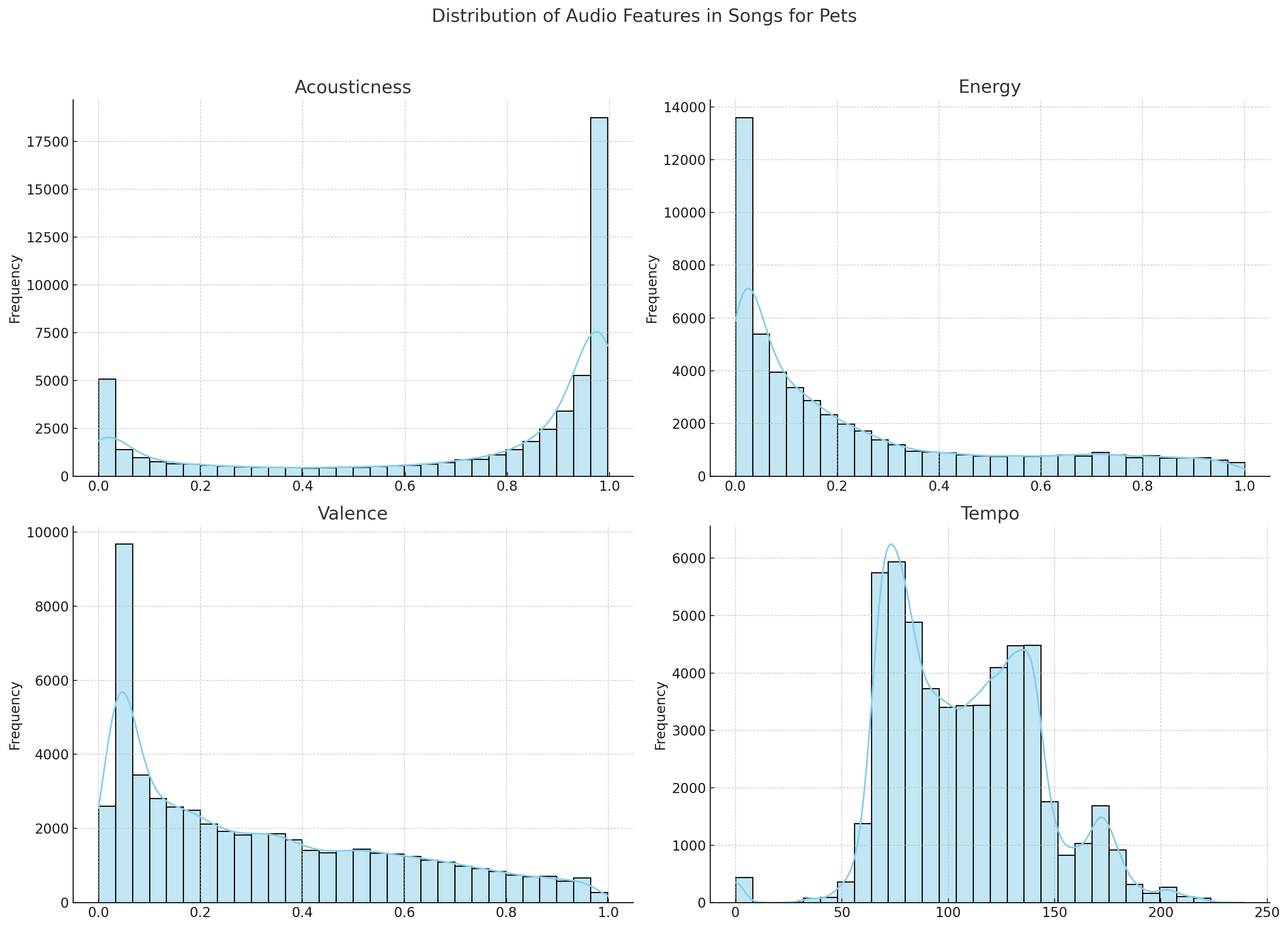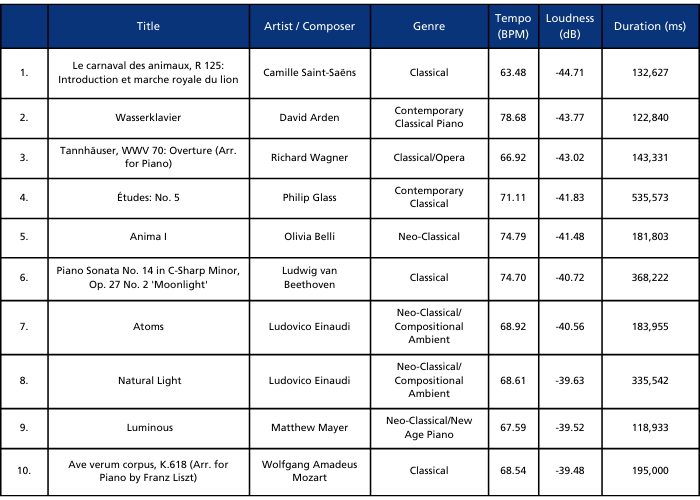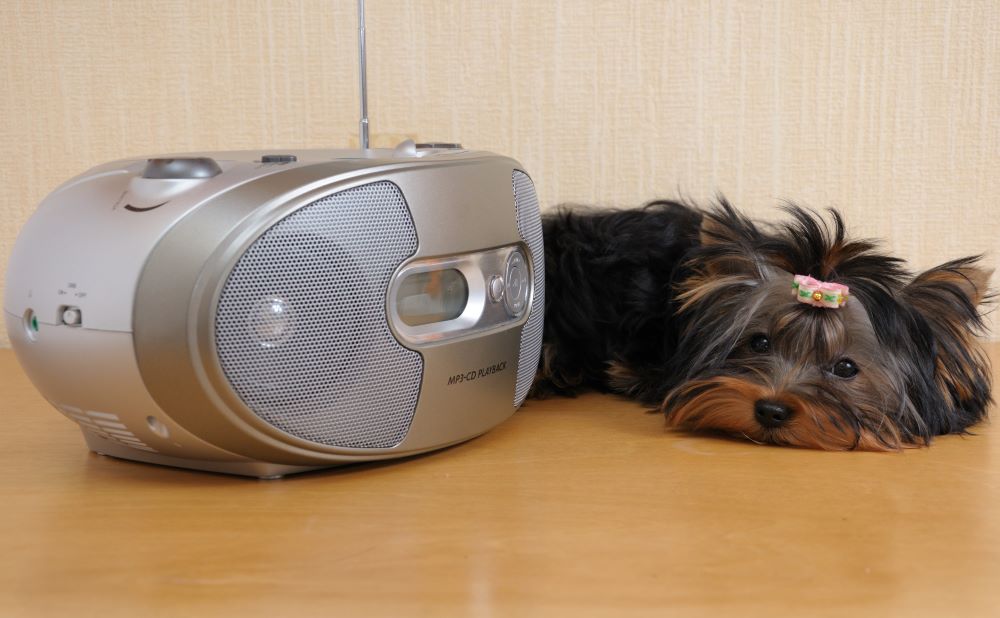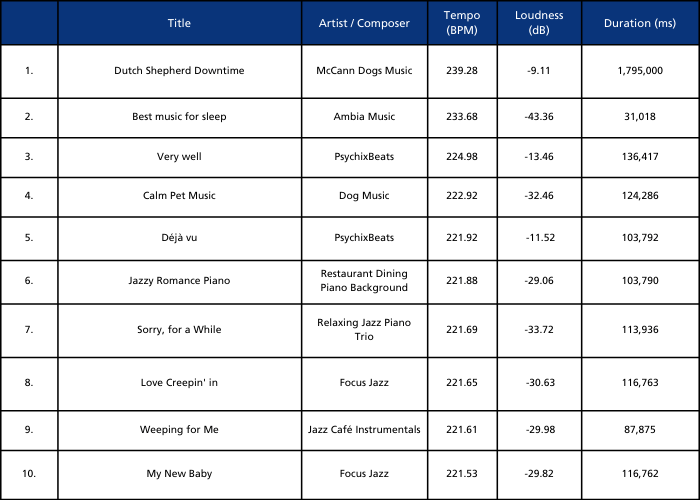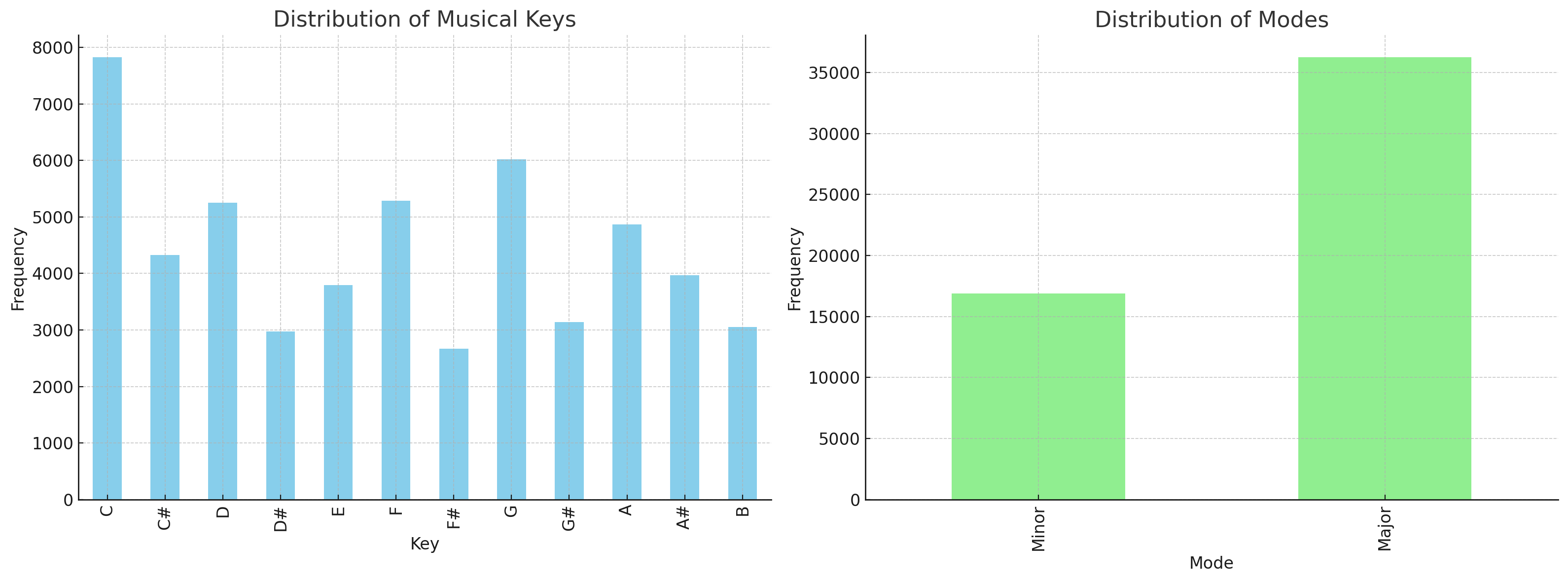Calming songs for anxious dogs: 50,000+ Spotify songs analysed
Does your dog get stressed by storms or sirens? Freaked out by fireworks or fire engines? Nervous of a neighbourhood party, other dogs barking, or the vacuum cleaner running? Or perhaps your furry family member gets anxious when they are alone at home?
You may not be too surprised to learn that in these and other stressful situations, playing certain types of music can actually help your precious pooch feel more relaxed and calm.

Researchers have been exploring this topic for some time, and their findings show that playing specific genres of music can reduce negative behaviours in dogs, such as excessive barking and the inability to lie down and relax.
The magic of music
We all know that music is a powerful tool that can change our emotions. It can calm us down or hype us up, make us weep or dance with joy. And it can have a similar effect on our dogs – albeit usually minus the weeping and dancing!
But, before you click play on your favourite bedtime playlist to see if your dog dozes off as quickly as you do, read on. If you want to help your dog to relax, be aware that some types of music are better than others for the task.
Top of the pops for pets
 To get a better understanding of the songs and genres that pet owners like to play to lull their pooches to lalaland, we’ve collected the data from 53,176 songs and 295 playlists on Spotify, analysed the key characteristics of the songs, and bring you our findings.
To get a better understanding of the songs and genres that pet owners like to play to lull their pooches to lalaland, we’ve collected the data from 53,176 songs and 295 playlists on Spotify, analysed the key characteristics of the songs, and bring you our findings.
Spoiler alert – Ed Sheeran, Adele and Taylor Swift don’t make the top 10! In fact, you may be quite surprised by the presence of artists you’ve never heard before.
Here are the 10 songs and their artists that appeared most often in pet playlists:
- “I Dreamed” by Ferrox – 102 instances
- “The Forest Speaks” by Ferrox – 102 instances
- “Season’s End” by Ferrox – 99 instances
- “In Good Time” by PandaBjørn – 96 instances
- “House On The Hill” by muskii – 92 instances
- “Gentle Things” by Samuel Goldhurst – 92 instances
- “After You” by Ferrox – 92 instances
- “Familiar Feelings” by Yoro Ekander – 86 instances
- “The Motion” by Ferrox – 82 instances
- “Blue Azure” by Katarina Lindqvist – 80 instances
When categorising these songs by their genre, we found that the 10 most popular genres in the dataset were:
- Pet Calming – 7071 instances
- Pet Calming, Sleep – 4241 instances
- Sleep – 877 instances
- Lullaby – 736 instances
- Japanese VGM (Video Game Music) – 680 instances
- Neo-Classical – 504 instances
- Instrumental Lullaby – 378 instances
- Ambient Guitar – 310 instances
- Pianissimo – 254 instances
- Piano Cover – 245 instances
The genre is the category or style of music, such as pop, jazz or rock. The genres above indicate a strong preference for calm, soothing, and instrumental music within the dataset.
They may be the most popular, but are they the most calming?
While these are the most popular songs and genres that pet people are currently playing to their dogs, we wanted to know if they are also the most effective at calming dogs down or sending them off to sleep? So, we did a deep dive into the data.

The science behind the songs
Every song and piece of music from the dataset was analysed based on its unique audio features, and these features were then statistically correlated with each other. When we find positive correlations between any two variables, we can assume that they go together and we can determine how strong that relationship is.
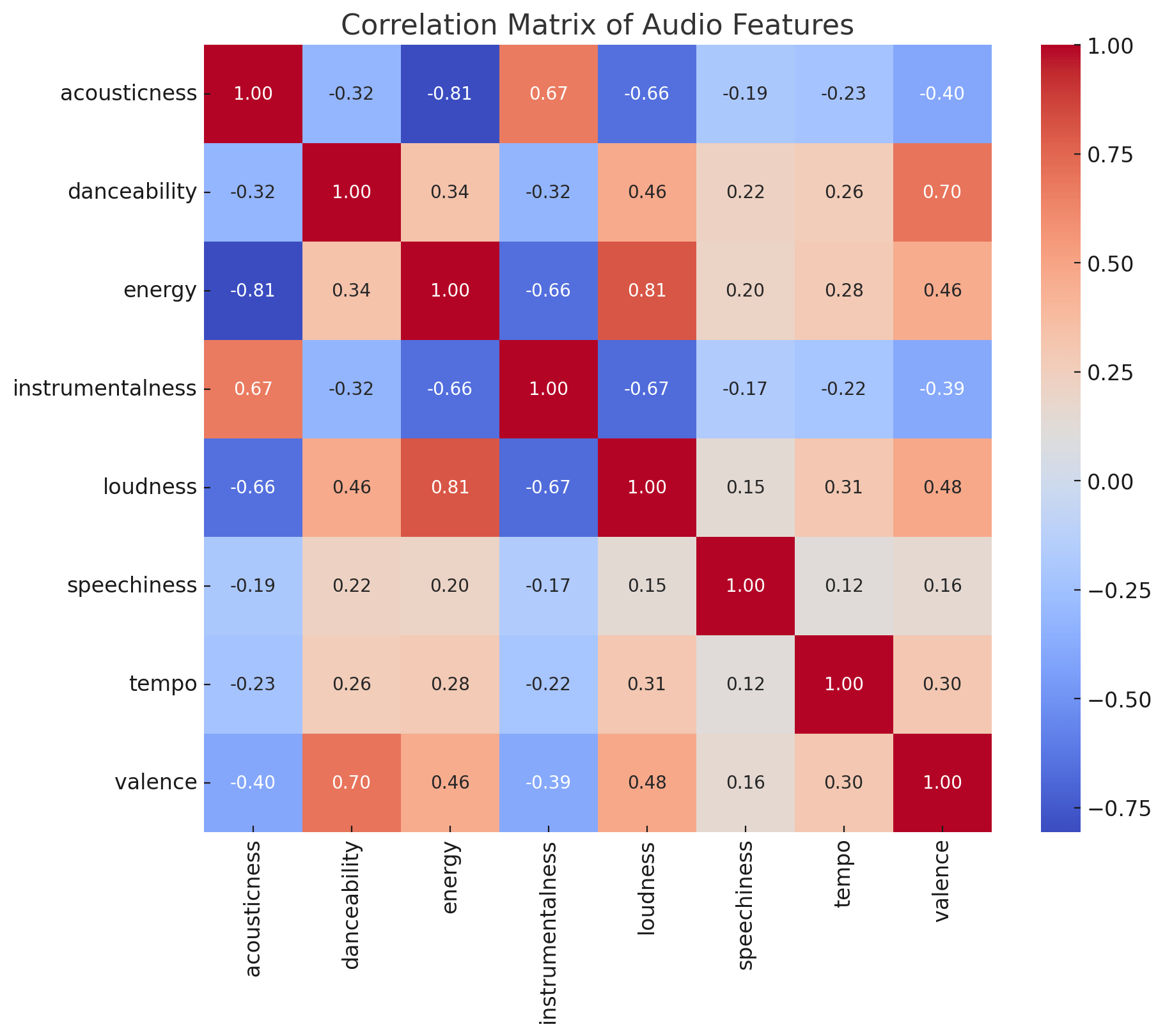
Here are some key insights from our correlation analysis:
- Energy and Acousticness: There’s a strong negative correlation (-0.81) between energy and acousticness, indicating that tracks with higher energy tend to be less acoustic and vice versa. This makes sense as acoustic tracks are generally softer and more mellow than songs with electronic instruments.
- Energy and Loudness: There’s a significant positive correlation (0.81) between energy and loudness. Energetic tracks are typically louder, while low energy tracks are typically softer.
- Valence and Danceability: There’s a positive correlation (0.70) between valence and danceability, suggesting that tracks that are more danceable tend to convey a more positive mood, as well as the reverse.
- Instrumentalness and Acousticness: There’s a positive correlation (0.67) between instrumentalness and acousticness, indicating that tracks with higher acousticness are more likely to be instrumental.
These correlations can provide some key insights into the characteristics of songs for pets in this dataset.
For instance, the strong negative correlation between energy and acousticness might indicate a preference for more mellow, less energetic tracks in pet-related playlists, possibly to help with relaxation or sleep.

Genre Based Analysis
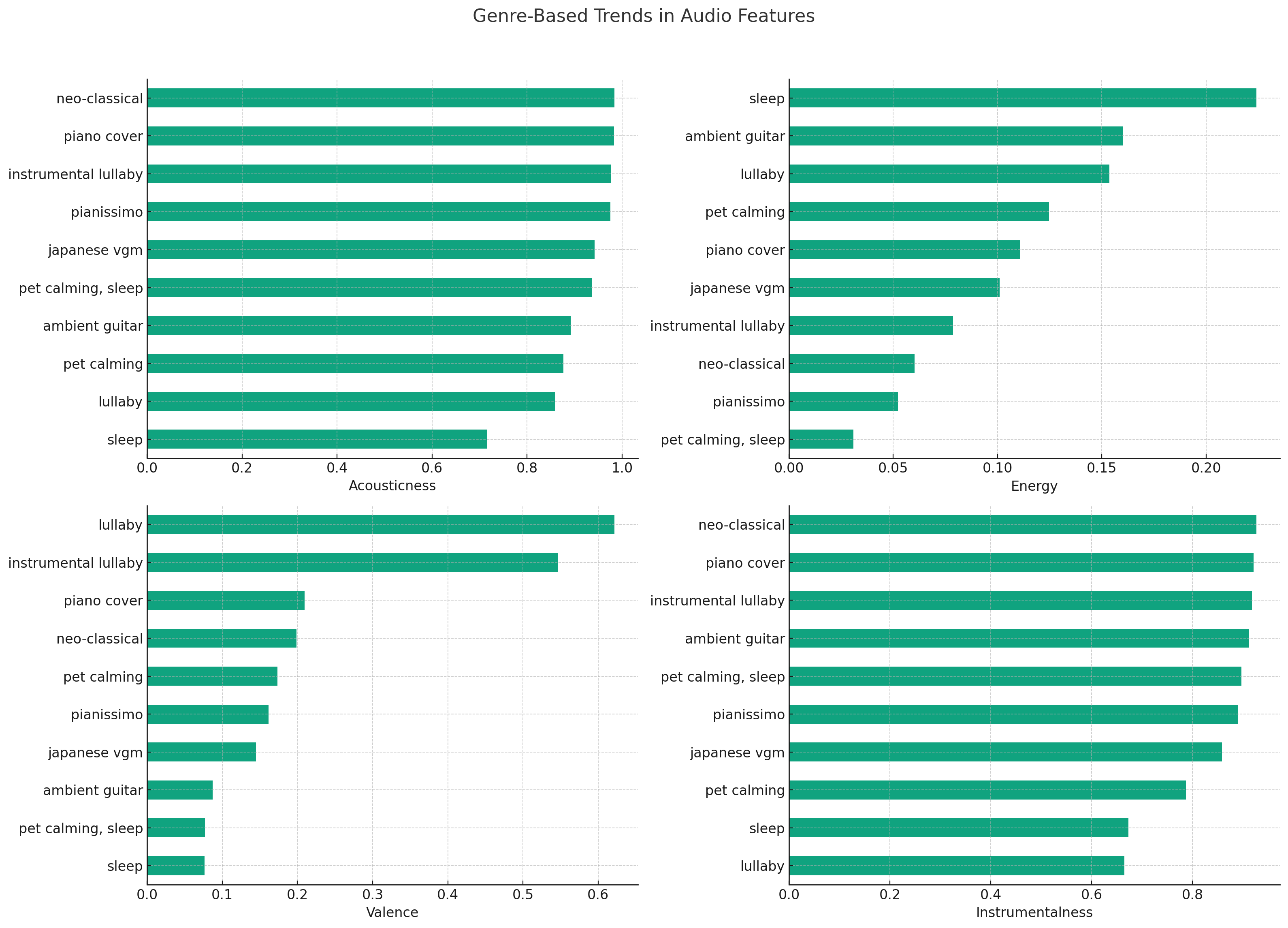
The bar charts illustrate how different audio features vary across popular genres in the dataset:
- Acousticness: Genres such as “Pianissimo” and “Instrumental Lullaby” tend to have very high acousticness, indicating a preference for softer, more mellow sounds in these genres. This aligns well with music intended to calm pets.
- Energy: Energy levels are generally lower across these genres, with “Pianissimo” and “Instrumental Lullaby” showing the lowest energy levels. This suggests that these genres comprise more relaxed, less intense music, likely to create a calming environment for pets. Note that while “Sleep” appears much higher, it scores only 0.25 out of a possible score of 1, so is still a very low energy genre overall.
- Valence: The valence varies significantly across genres, with “Ambient Guitar” and “Sleep” showing lower valence, indicating more subdued, less cheerful music. On the other hand, genres like Instrumental Lullaby” and “Lullaby” show higher valence, suggesting a happier or more uplifting mood.
- Instrumentalness: Most genres exhibit high instrumentalness, indicating a strong preference for music without vocals. This is likely because instrumental music can be less stimulating and more soothing for pets.
The histograms above show the distribution of key audio features in songs for pets:
- Acousticness: The distribution of acousticness is skewed towards higher values, indicating that a significant portion of the tracks in this dataset are highly acoustic. This suggests a preference for softer, more mellow sounds in pet-related music, likely due to their calming effect.
- Energy: The energy levels of the tracks are generally low, with a peak towards the lower end of the scale. This trend aligns with the idea that songs for pets are intended to be calming and not overly stimulating, which is reflected in their lower intensity and activity levels.
- Valence: The valence distribution is relatively broad, but there’s a noticeable lean towards the lower end, indicating that many tracks convey a more subdued mood. This might be beneficial for relaxing pets, as overly cheerful music could be too stimulating.
- Tempo: The tempo distribution shows a wide range of values, indicating a variety of rhythms within the dataset. However, there doesn’t appear to be a strong bias towards either slow or fast tempos, suggesting that tempo might be less critical in determining a song’s suitability for pets compared to other features like acousticness and energy.
What the research tells us about the most ideal music to calm dogs down
Genre
- Classical music is consistently found to be calming for dogs. Studies have shown that classical music has a calming effect in potentially stressful environments such as boarding kennels, rescue shelters and vet clinics, compared to controls and other forms of music.
- Classical music has the ability to significantly influence specific behaviours and physiological parameters that have been associated with the canine stress response such as heart rate variability, level of vocalisation and time spent resting, sleeping and quiet.
- Other genres including soft rock and reggae can also be beneficial, as they have been shown to reduce stress and increase heart rate variability.
- Rock and heavy metal music were found to induce undesirable behavioural and physiological changes in dogs, such as increased barking or vocalizing and standing or body shaking.
- In one study, findings suggest that providing a variety of different genres may minimize habituation.
- Music marketed as being specifically designed for dogs (five studies examining dog music all used “Through a dog’s ear”) did not appear to have many beneficial effects over and above those gained by exposing dogs to a random selection of classical music.

Tempo (beats per minute)
- Slow, steady tempo of around 60 to 80 beats per minute, which matches, or is slightly lower than, a dog’s resting heart rate.
Pitch
- A moderate to high pitch is best. Lower pitches can increase alertness, while extremely high pitches should be avoided as they might be irritating or overstimulating for dogs.
Rhythm and Complexity
- Repetitive rhythm, simple structures, soothing melodies and stable harmony are preferrable. Simple and predictable patterns are more likely to be soothing, while complexity can overstimulate a dog’s senses.
Instrumentation
- Songs featuring simple and soft piano sounds or gentle string instruments can be more relaxing. Loud, harsh, or highly electronic sounds might be less effective or even stressful.
Volume
- Low volume, around 25 dB (dogs have much more sensitive hearing than we do).
Duration and Consistency
- Longer durations of continuous music can be more effective than short bursts. Consistent auditory environments prevent sudden changes that might startle or stress dogs.
Personalization
- Playing music that the dog has heard in the presence of their owner, especially in a calm and happy context, can be beneficial. This might make the music more effective in reducing stress.
Variety
- Some variety is necessary as research has found resistance to effects of music if the same playlist is used repeatedly.
Characteristics of music to avoid in calming playlists for dogs
- Random beats and loud percussion instruments such as drums and cymbals, which can startle dogs.
- Lyrics or vocals – according to the research, dogs repond better to instrumentals.
- Saxophones, clarinets and other reed instruments – these can mimic canine howls and cause agitation.

